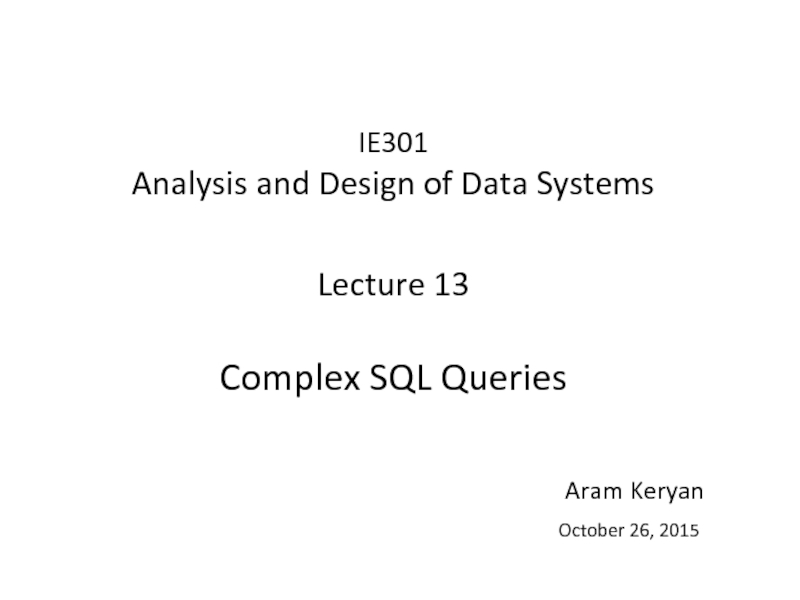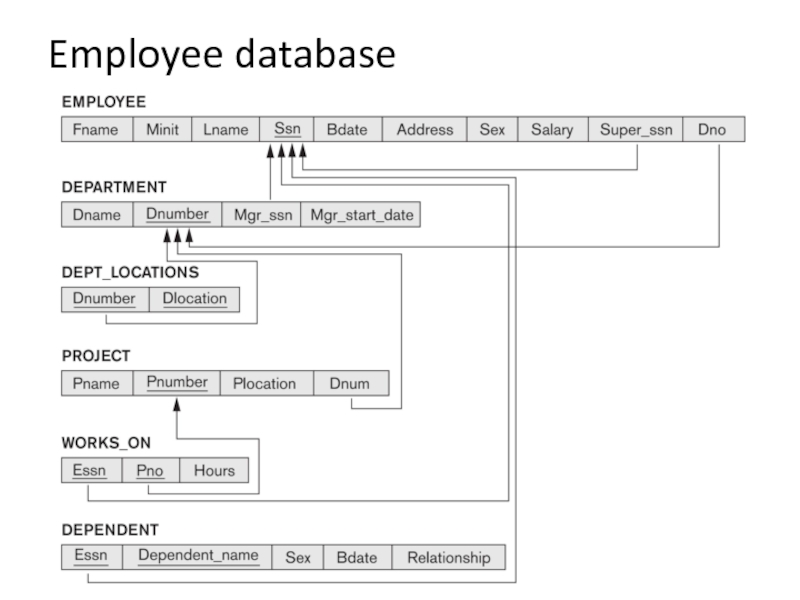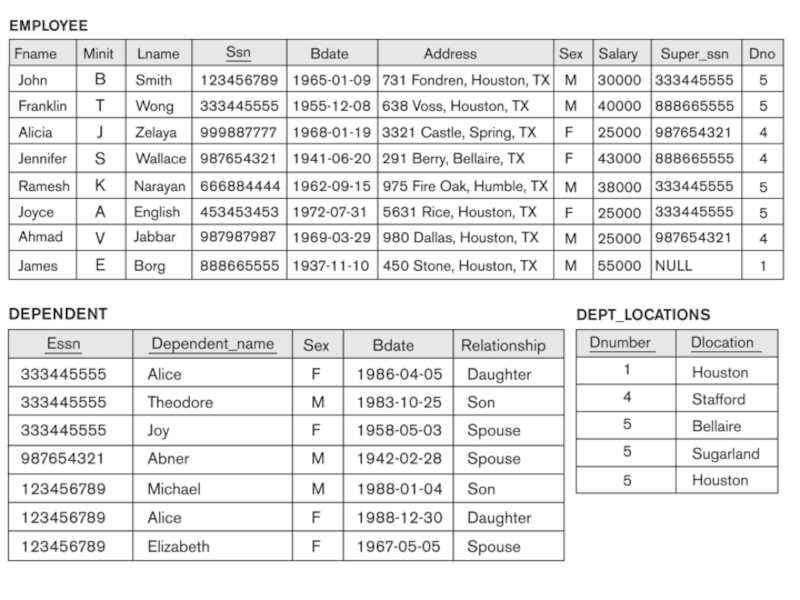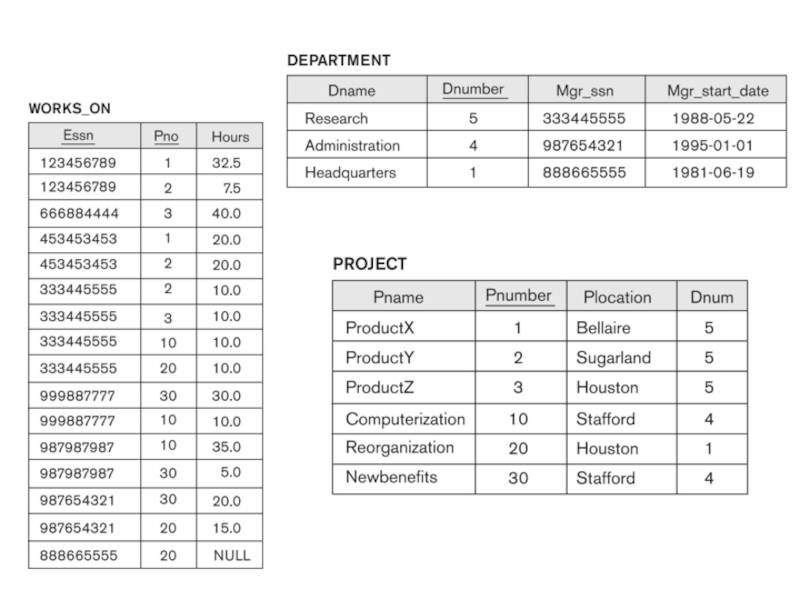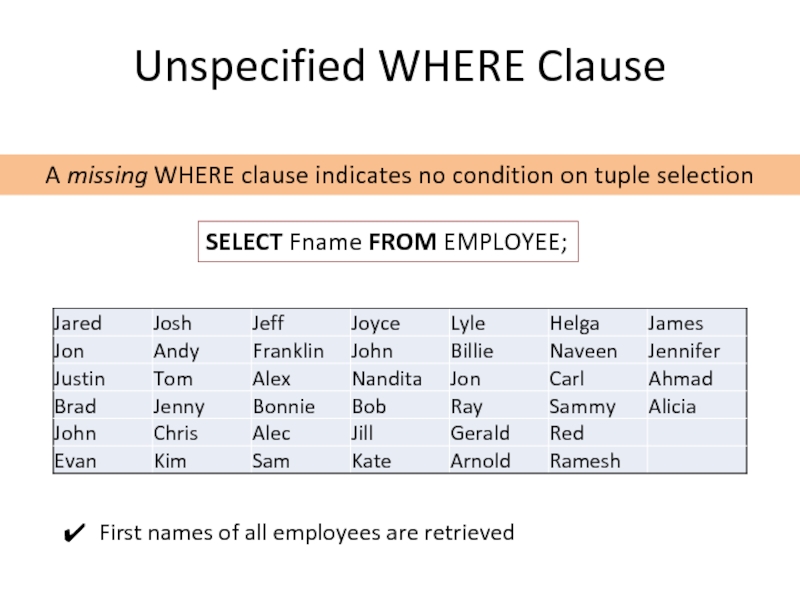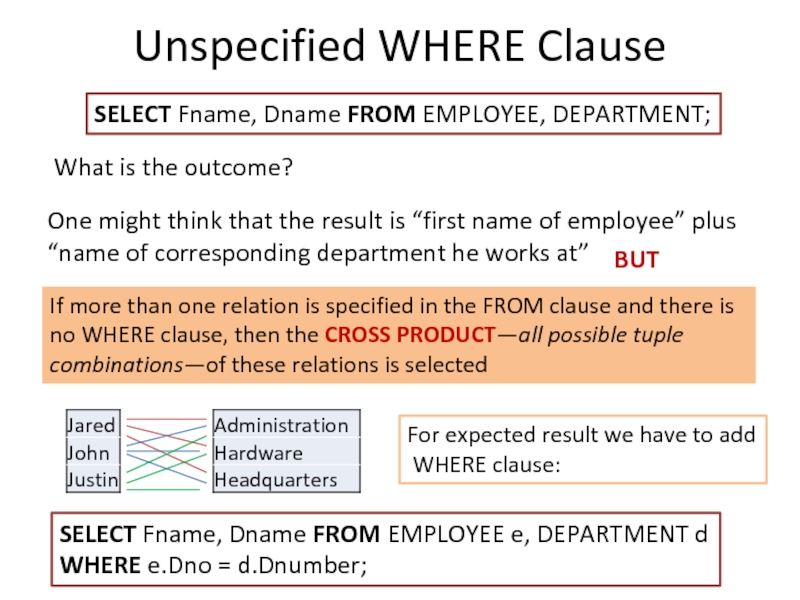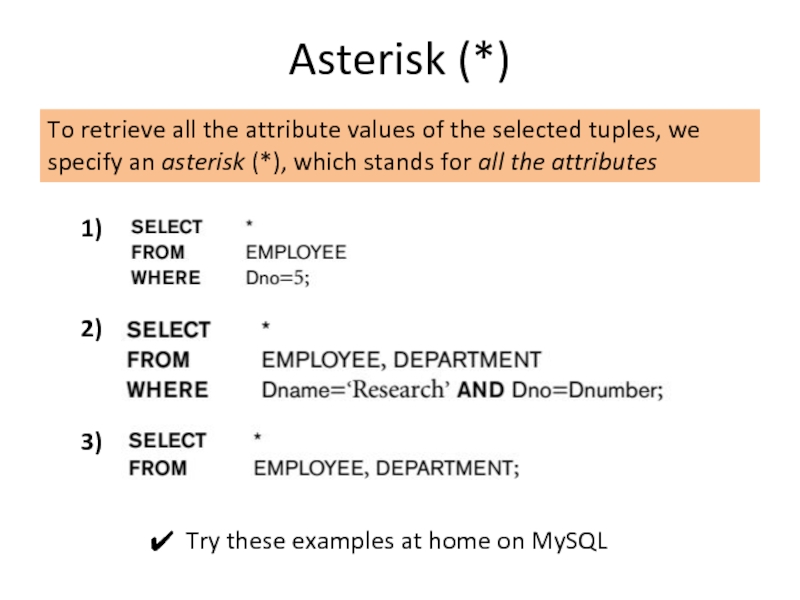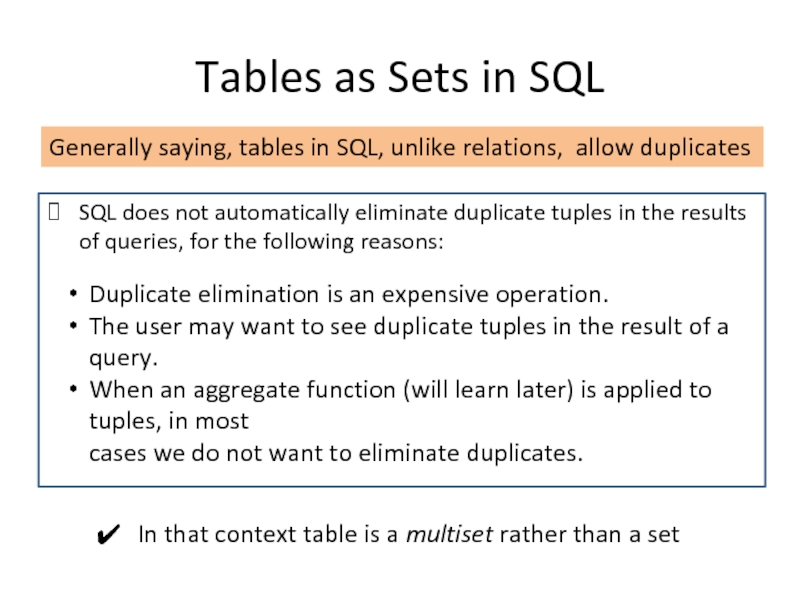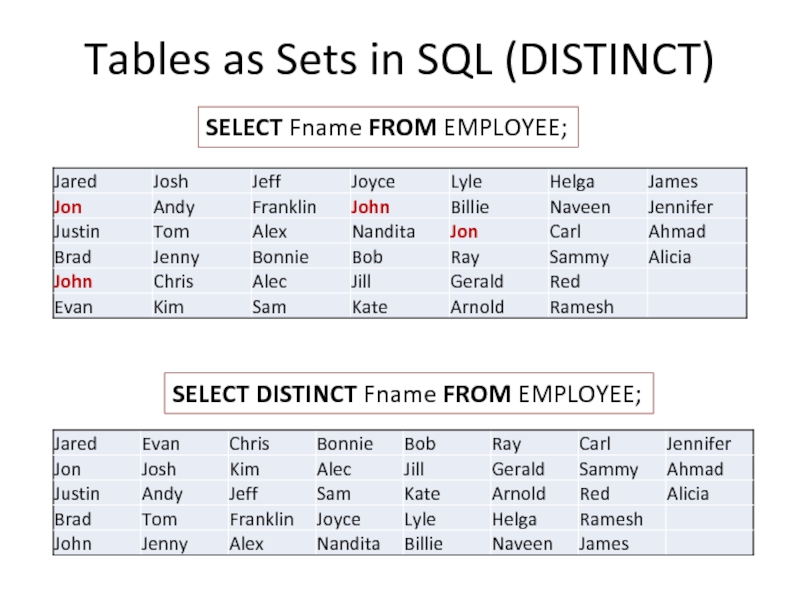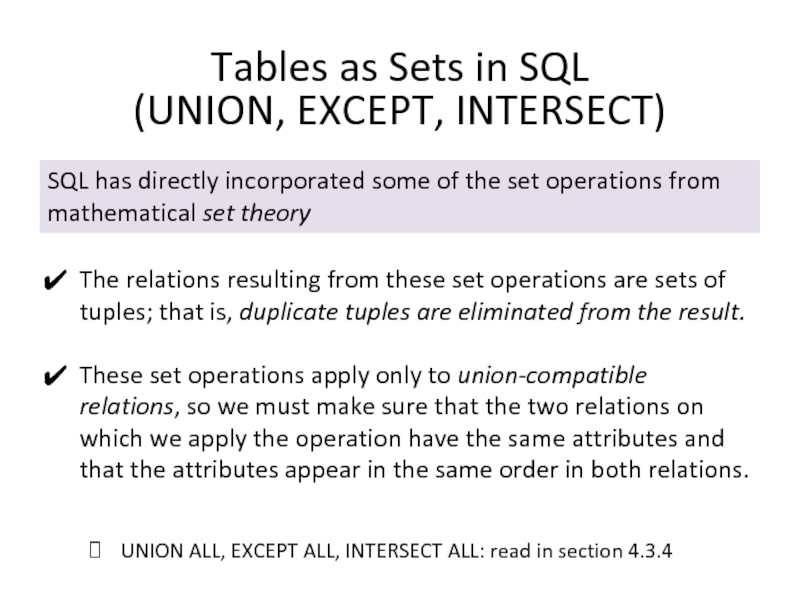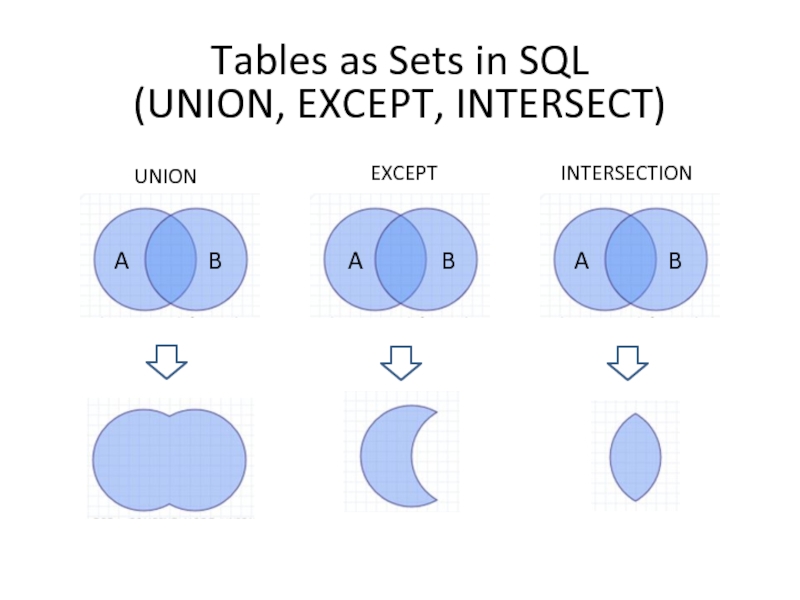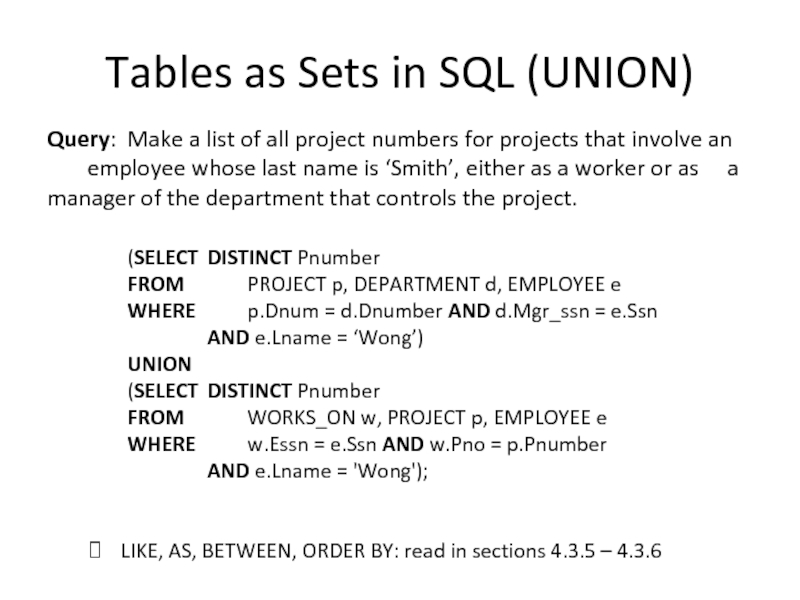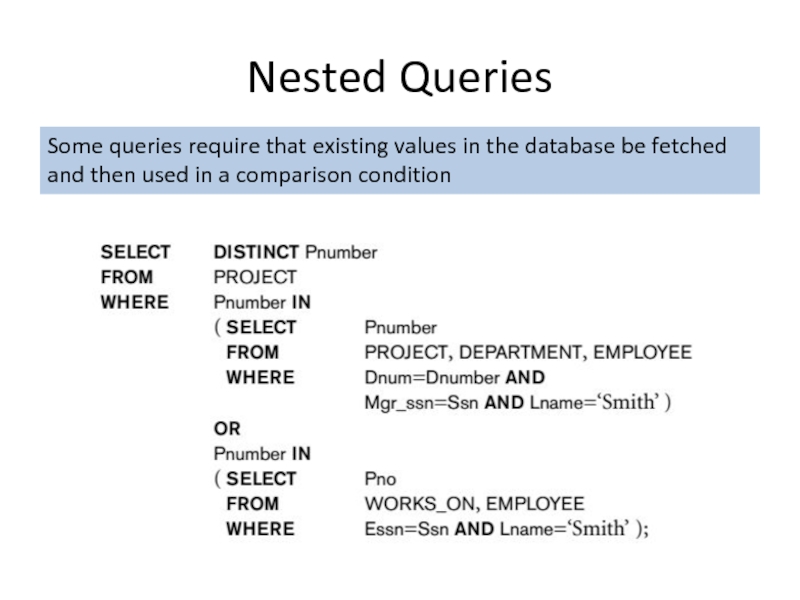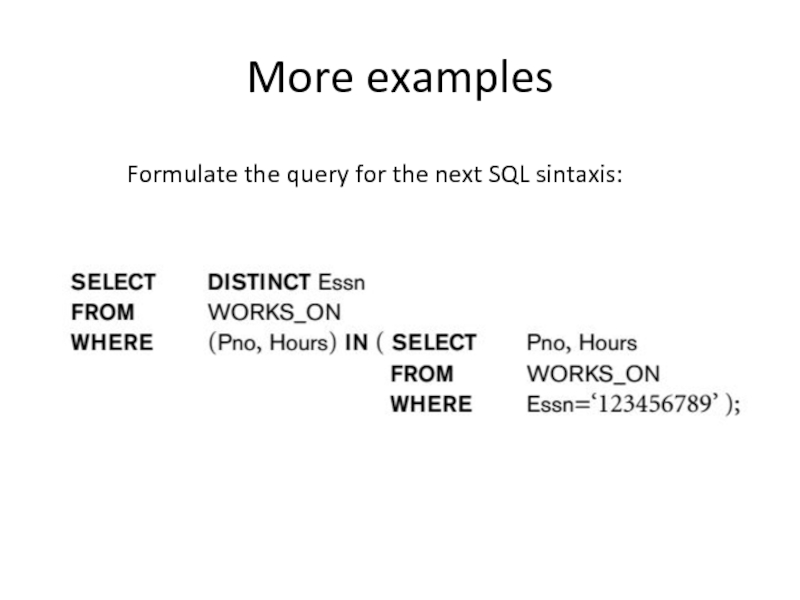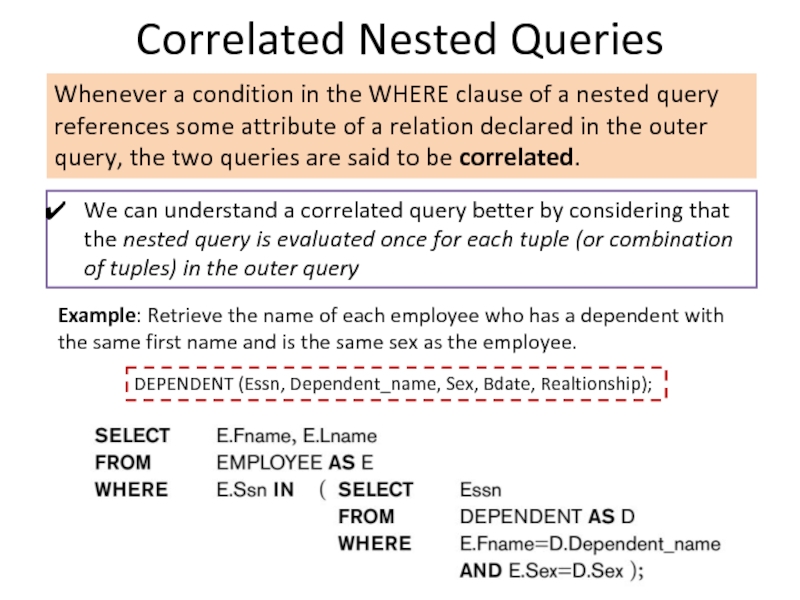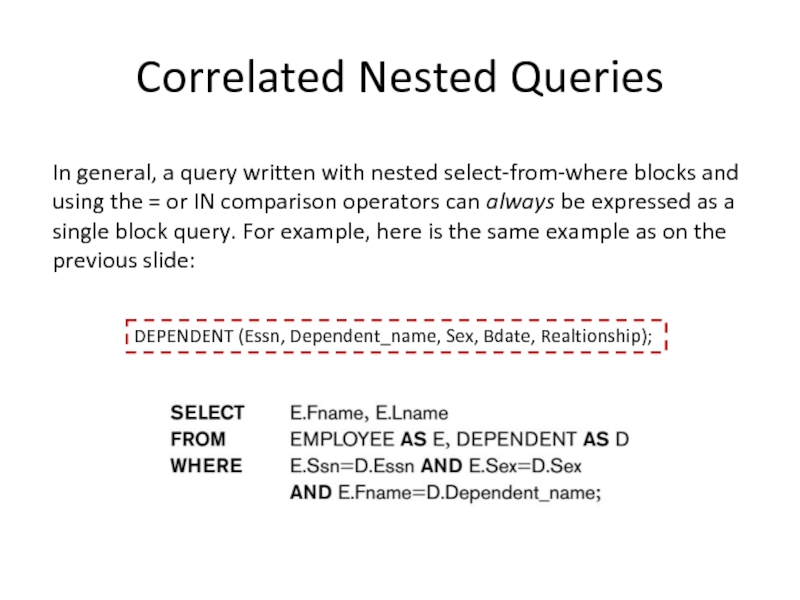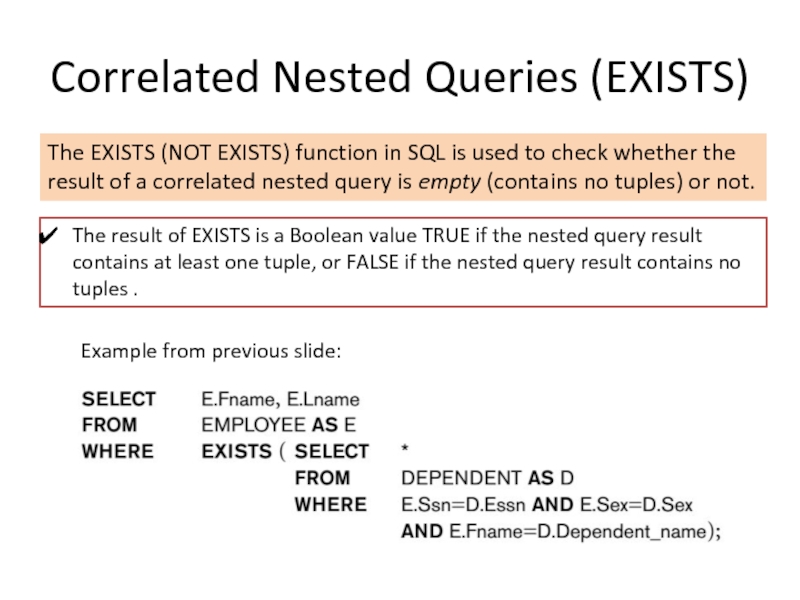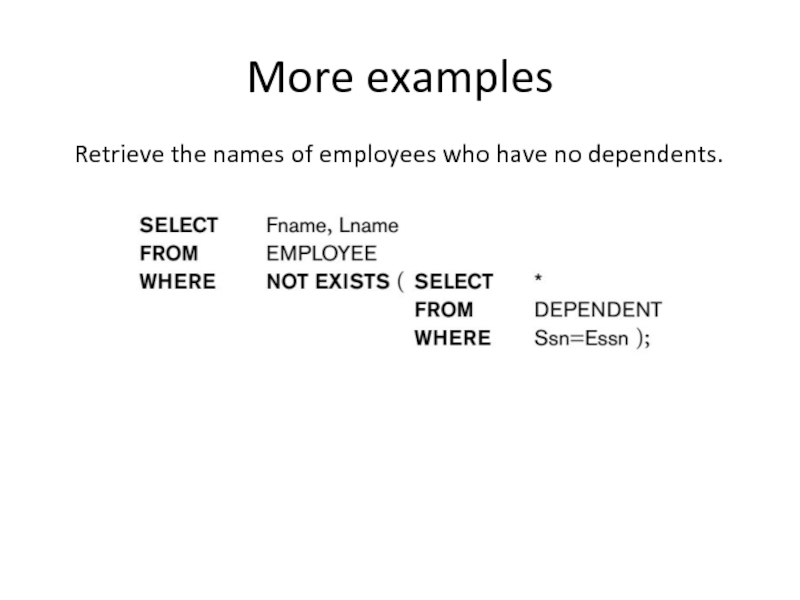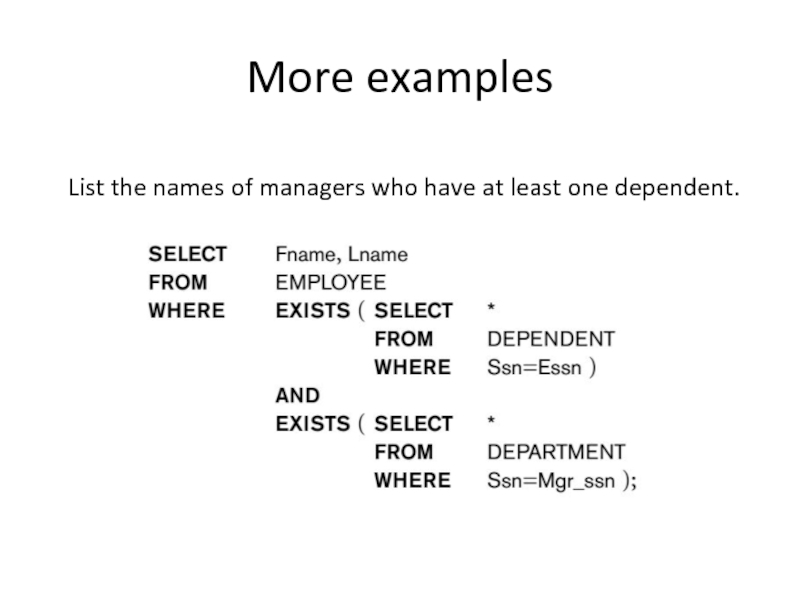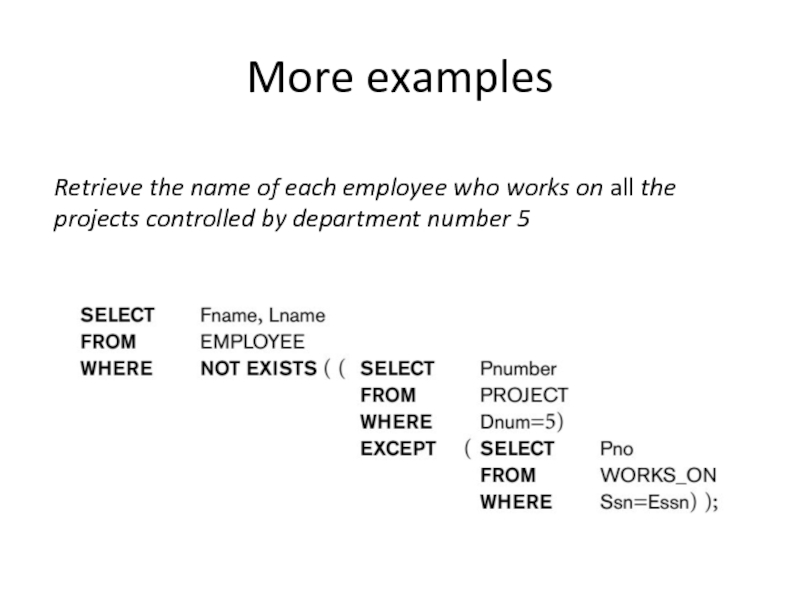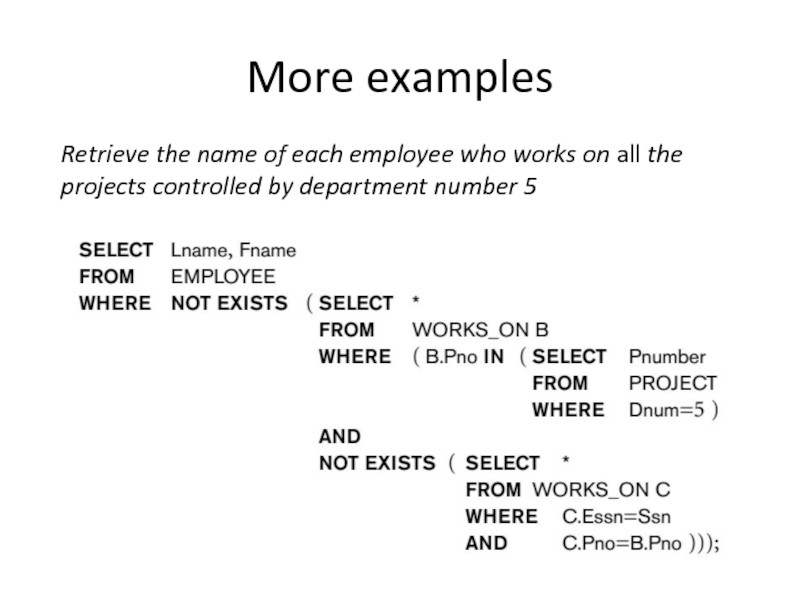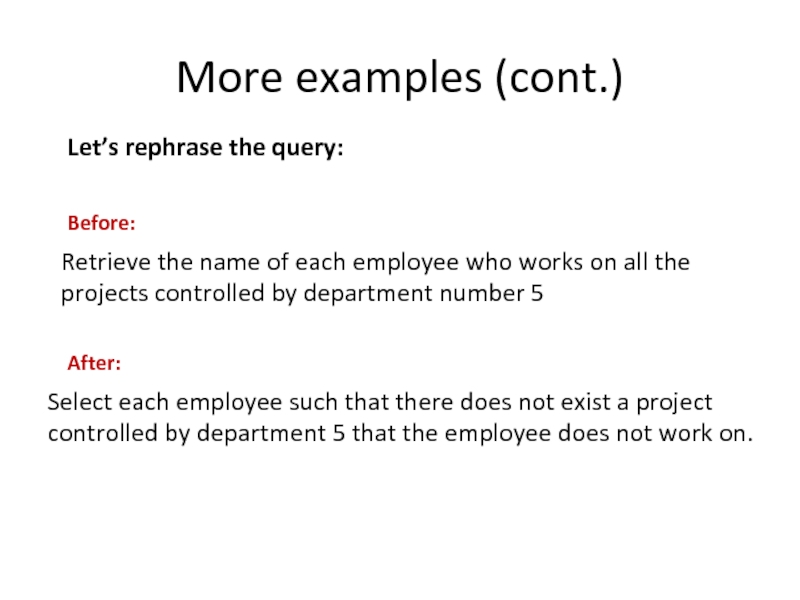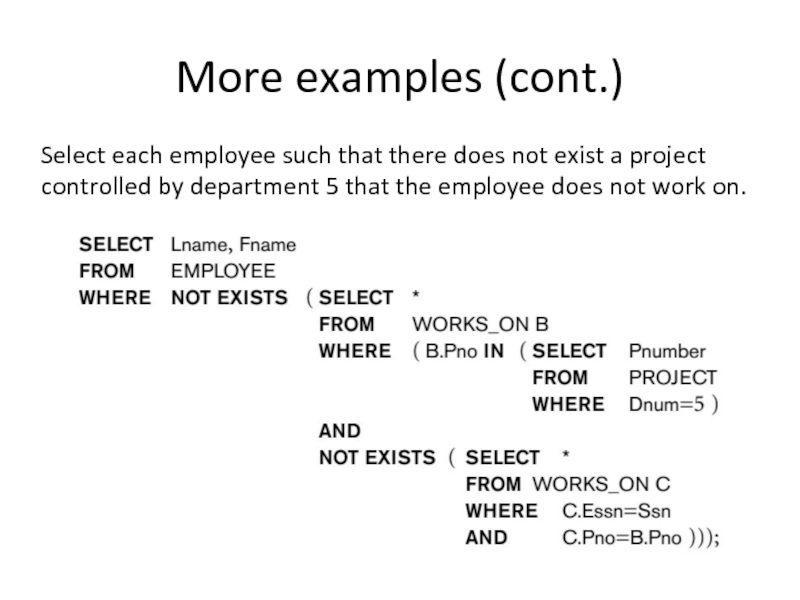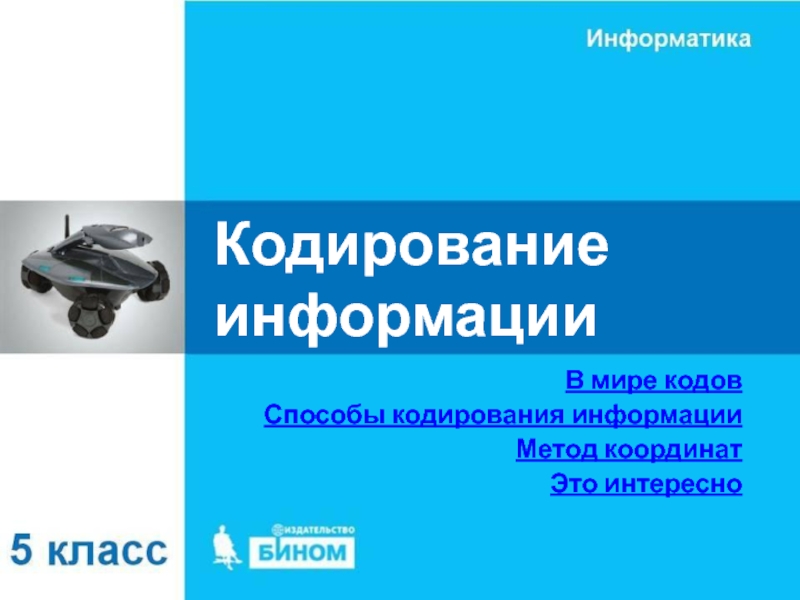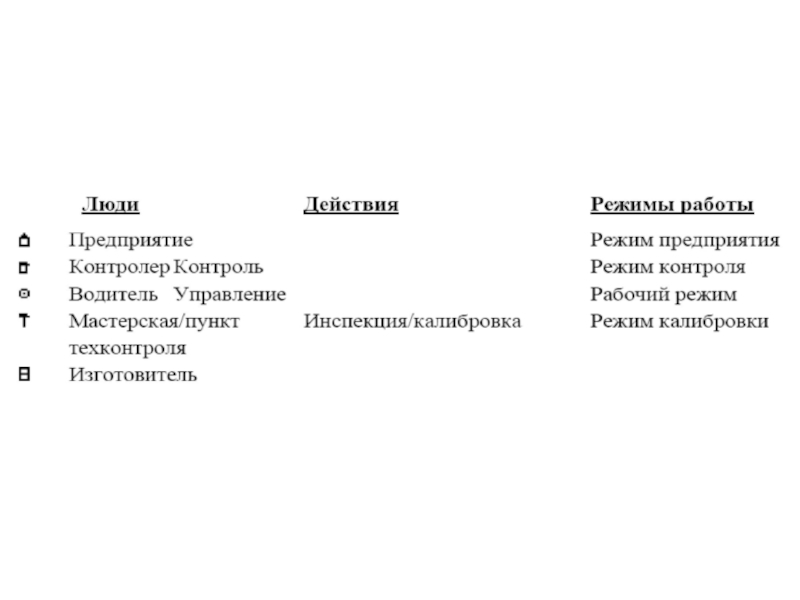- Главная
- Разное
- Дизайн
- Бизнес и предпринимательство
- Аналитика
- Образование
- Развлечения
- Красота и здоровье
- Финансы
- Государство
- Путешествия
- Спорт
- Недвижимость
- Армия
- Графика
- Культурология
- Еда и кулинария
- Лингвистика
- Английский язык
- Астрономия
- Алгебра
- Биология
- География
- Детские презентации
- Информатика
- История
- Литература
- Маркетинг
- Математика
- Медицина
- Менеджмент
- Музыка
- МХК
- Немецкий язык
- ОБЖ
- Обществознание
- Окружающий мир
- Педагогика
- Русский язык
- Технология
- Физика
- Философия
- Химия
- Шаблоны, картинки для презентаций
- Экология
- Экономика
- Юриспруденция
Analysis and Design of Data Systems. Complex SQL Queries (Lecture 13) презентация
Содержание
- 1. Analysis and Design of Data Systems. Complex SQL Queries (Lecture 13)
- 2. Employee database
- 5. Unspecified WHERE Clause A missing WHERE clause
- 6. Unspecified WHERE Clause SELECT Fname, Dname FROM
- 7. Asterisk (*) To retrieve all the attribute
- 8. Tables as Sets in SQL Generally saying,
- 9. Tables as Sets in SQL (DISTINCT) SELECT Fname FROM EMPLOYEE; SELECT DISTINCT Fname FROM EMPLOYEE;
- 10. Tables as Sets in SQL (UNION,
- 11. Tables as Sets in SQL (UNION,
- 12. Query: Make a list of all project
- 13. Nested Queries Some queries require that existing
- 14. More examples Formulate the query for the next SQL sintaxis:
- 15. Correlated Nested Queries Whenever a condition in
- 16. Correlated Nested Queries In general, a query
- 17. Correlated Nested Queries (EXISTS) The EXISTS (NOT
- 18. More examples Retrieve the names of employees who have no dependents.
- 19. List the names of managers who have at least one dependent. More examples
- 20. More examples Retrieve the name of each
- 21. More examples Retrieve the name of each
- 22. More examples (cont.) Select each employee such
- 23. More examples (cont.) Select each employee such
Слайд 1IE301
Analysis and Design of Data Systems
Lecture 13
Complex SQL Queries
Aram Keryan
October
Слайд 5Unspecified WHERE Clause
A missing WHERE clause indicates no condition on tuple
SELECT Fname FROM EMPLOYEE;
First names of all employees are retrieved
Слайд 6Unspecified WHERE Clause
SELECT Fname, Dname FROM EMPLOYEE, DEPARTMENT;
What is the outcome?
One
BUT
If more than one relation is specified in the FROM clause and there is no WHERE clause, then the CROSS PRODUCT—all possible tuple combinations—of these relations is selected
SELECT Fname, Dname FROM EMPLOYEE e, DEPARTMENT d
WHERE e.Dno = d.Dnumber;
For expected result we have to add
WHERE clause:
Слайд 7Asterisk (*)
To retrieve all the attribute values of the selected tuples,
1)
2)
3)
Try these examples at home on MySQL
Слайд 8Tables as Sets in SQL
Generally saying, tables in SQL, unlike relations,
SQL does not automatically eliminate duplicate tuples in the results of queries, for the following reasons:
Duplicate elimination is an expensive operation.
The user may want to see duplicate tuples in the result of a query.
When an aggregate function (will learn later) is applied to tuples, in most
cases we do not want to eliminate duplicates.
In that context table is a multiset rather than a set
Слайд 9Tables as Sets in SQL (DISTINCT)
SELECT Fname FROM EMPLOYEE;
SELECT DISTINCT Fname
Слайд 10Tables as Sets in SQL
(UNION, EXCEPT, INTERSECT)
SQL has directly incorporated
The relations resulting from these set operations are sets of tuples; that is, duplicate tuples are eliminated from the result.
These set operations apply only to union-compatible relations, so we must make sure that the two relations on which we apply the operation have the same attributes and that the attributes appear in the same order in both relations.
UNION ALL, EXCEPT ALL, INTERSECT ALL: read in section 4.3.4
Слайд 12Query: Make a list of all project numbers for projects that
Tables as Sets in SQL (UNION)
LIKE, AS, BETWEEN, ORDER BY: read in sections 4.3.5 – 4.3.6
(SELECT DISTINCT Pnumber
FROM PROJECT p, DEPARTMENT d, EMPLOYEE e
WHERE p.Dnum = d.Dnumber AND d.Mgr_ssn = e.Ssn
AND e.Lname = ‘Wong’)
UNION
(SELECT DISTINCT Pnumber
FROM WORKS_ON w, PROJECT p, EMPLOYEE e
WHERE w.Essn = e.Ssn AND w.Pno = p.Pnumber
AND e.Lname = 'Wong');
Слайд 13Nested Queries
Some queries require that existing values in the database be
Слайд 15Correlated Nested Queries
Whenever a condition in the WHERE clause of a
We can understand a correlated query better by considering that the nested query is evaluated once for each tuple (or combination of tuples) in the outer query
Example: Retrieve the name of each employee who has a dependent with the same first name and is the same sex as the employee.
DEPENDENT (Essn, Dependent_name, Sex, Bdate, Realtionship);
Слайд 16Correlated Nested Queries
In general, a query written with nested select-from-where blocks
DEPENDENT (Essn, Dependent_name, Sex, Bdate, Realtionship);
Слайд 17Correlated Nested Queries (EXISTS)
The EXISTS (NOT EXISTS) function in SQL is
The result of EXISTS is a Boolean value TRUE if the nested query result contains at least one tuple, or FALSE if the nested query result contains no tuples .
Example from previous slide:
Слайд 20More examples
Retrieve the name of each employee who works on all
Слайд 21More examples
Retrieve the name of each employee who works on all
Слайд 22More examples (cont.)
Select each employee such that there does not exist
Let’s rephrase the query:
Retrieve the name of each employee who works on all the projects controlled by department number 5
Before:
After:
